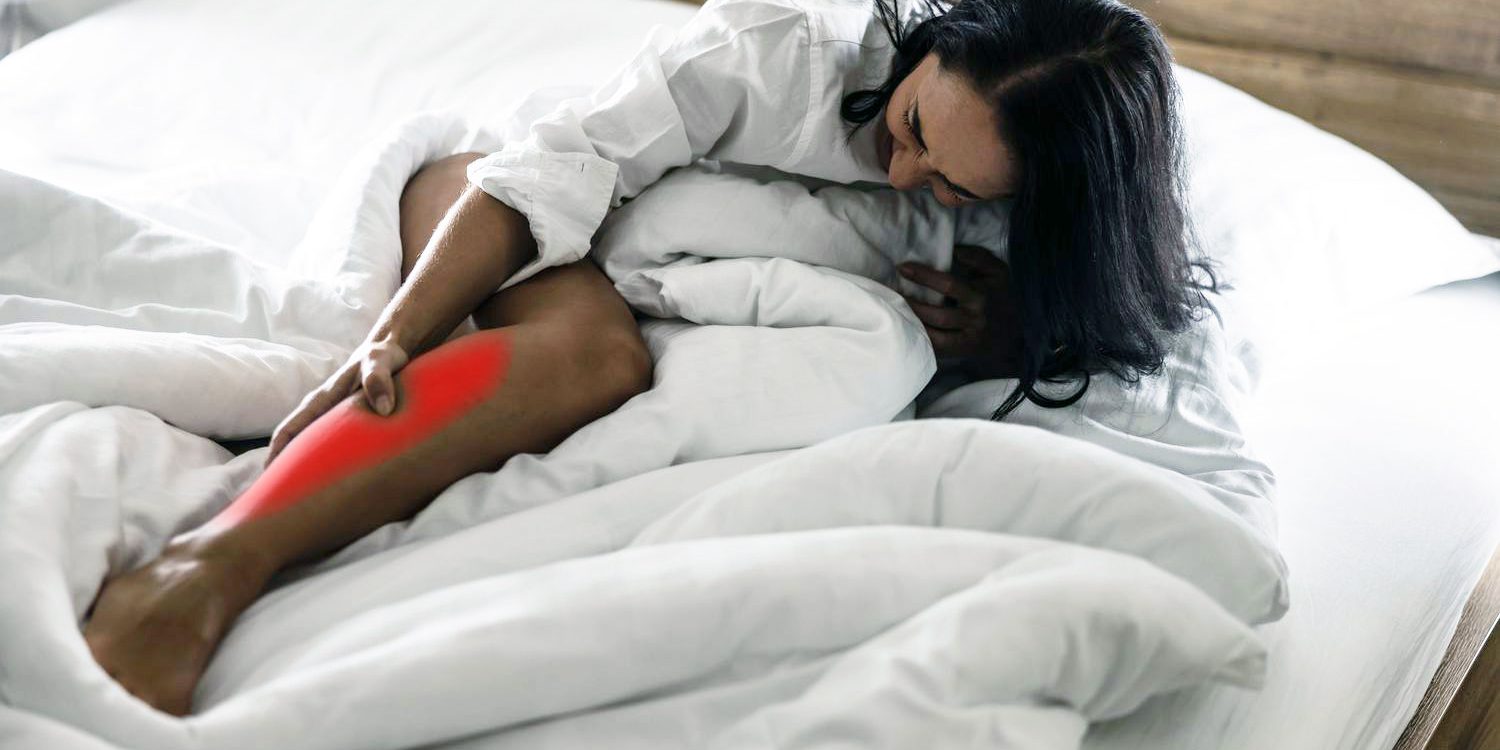Almost every night, I wake up with intense calf cramps that feel like my muscles are twisting into knots. It's impossible to get back to sleep afterward. – Emily Carter
Nighttime calf strains and spasms, commonly referred to as leg cramps, are a frequent nuisance that can disrupt a good night’s sleep and leave you feeling sore and fatigued the next day.
Understanding the causes and implementing effective strategies can significantly reduce the frequency and intensity of these painful episodes. Let’s explore the phenomenon of what causes those nighttime calf cramps or spasms and cover 3 popular tips on how to rid the discomfort and prevent future spams at night.
Understanding Nighttime Calf Cramps
Calf cramps at night are sudden, involuntary contractions of the muscles in the lower leg. These spasms can be intensely painful and often occur without warning. The exact cause is not always clear, but several factors such as muscle fatigue, dehydration, and electrolyte imbalances are commonly implicated.
Moreover, they tend to be more frequent in older adults and those who are physically active, stressing their leg muscles during the day.
3 Tips to Ease the Pain and Prevent Future Calf Cramps
- Proper Hydration and Nutrition
Keeping the body well-hydrated is crucial for muscle function. Dehydration is a common trigger for muscle cramps, as it disrupts the balance of minerals, like potassium, calcium, and magnesium, which help maintain muscle contractions and relaxations. Ensure you drink enough water throughout the day, especially if you are active or live in a hot climate. Additionally, incorporating a diet rich in these minerals can help stave off cramps. Foods like bananas, yogurt, nuts, and leafy greens are excellent sources. - Deep Stretching: Slant Board for Calf Stretching
Stretching is an effective way to relieve the pain of a cramp and to prevent future episodes. Using a slant board for calf stretching offers several benefits over traditional stretching methods. When you stretch using a slant board, you can achieve a deep stretch that is difficult within the aided support. When using a slant board for calf stretching, your foot is positioned at an angle, allowing for a deeper stretch along the calf muscles and Achilles tendon. This position can more effectively target muscle areas that are typically hard to reach with standard stretches. The other advantage is if the stretch is not deep enough, a slant board offers adjustable inclines or slants to tailor your stretch to a light, medium or advanced deep stretch.Regular use of a slant board not only helps in alleviating calf cramps and calf spasms, but also enhances overall leg strength, power, flexibility, and balance.
It’s a great wellness tool recommended by Physical Therapists for both health and wellness, and injury prevention and recovery, such as from plantar fasciitis or knee, leg or ankle injury rehabilitation. The incline slant board forces the muscles to engage differently, promoting increased range of motion and flexibility which is crucial for injury prevention. Browse Amazon.com for available slant boards for calf stretching that you can use at home, office or the gym.
- Temperature Adjustments
Muscles tend to seize up in colder temperatures, so keeping your sleeping environment warm can help prevent cramps. Consider using a heated blanket or wearing warm sleepwear that covers your legs. Additionally, ensure your bedding does not constrict your legs. Tight sheets or blankets can force the foot into an awkward position, potentially triggering a spasm.
Trying these strategies can significantly reduce the pain and inconvenience caused by nighttime calf cramps.
Tips: Physical therapists experiences on 12 causes of nighttime leg cramps
Regular stretching on a slant board, proper hydration and nutrition, and a warm, unconstrained sleeping environment can help you enjoy a restful, uninterrupted night’s sleep.
If cramps persist or worsen, it might be helpful to consult with a healthcare provider to rule out any underlying conditions that could be contributing to the problem.







